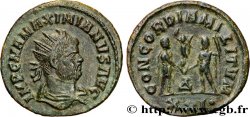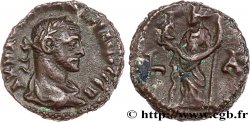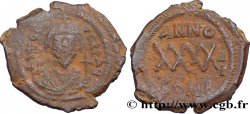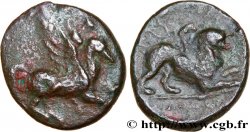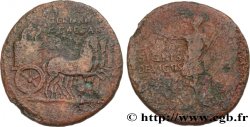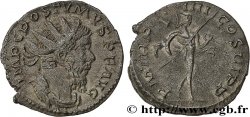brm_627705 - MAXIMIANUS HERCULIUS Aurelianus
Not available.
Item sold on our e-shop (2022)
Price : 120.00 €
Item sold on our e-shop (2022)
Price : 120.00 €
Type : Aurelianus
Date: 286-287
Mint name / Town : Ticinum
Metal : billon
Millesimal fineness : 20 ‰
Diameter : 22,5 mm
Orientation dies : 12 h.
Weight : 4,32 g.
Rarity : R1
Officine: 6e
Coments on the condition:
Exemplaire sur un flan bien centré des deux côtés. Beau buste de Maximien Hercule. Très joli revers bien venu à la frappe. Patine gris foncé avec des reflets métalliques dorés. Conserve au revers l’intégralité de son coupant d’origine et de son brillant de frappe
Obverse
Obverse legend : IMP M AVR VAL MAXIMIANVS AVG.
Obverse description : Buste radié, drapé et cuirassé de Maximien Hercule à droite, vu de trois quarts en avant (A).
Obverse translation : "Imperator Marcus Aurelius Valerius Maximianus Augustus", (L'empereur Marc Aurèle Valère Maximien auguste).
Reverse
Reverse legend : HERCVLI CONSERVAT// VIXXIT.
Reverse description : Hercule nu debout à droite, la main droite posé sur la hanche, la léonté enroulée autour du bras gauche, et tenant de la main gauche la massue posée sur un rocher.
Reverse translation : "Herculi Conservatori", (À Hercule conservateur).
Commentary
Avec l’intégralité de son argenture superficielle. Rubans de type 3. Ptéryges décorées sous le paludamentum.
With all of its surface silvering. Type 3 ribbons. Pteryges decorated under the paludamentum
With all of its surface silvering. Type 3 ribbons. Pteryges decorated under the paludamentum








 Report a mistake
Report a mistake Print the page
Print the page Share my selection
Share my selection Ask a question
Ask a question Consign / sell
Consign / sell
 Full data
Full data
